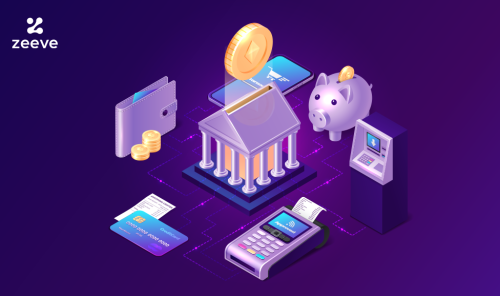Defending Against Illicit Cryptocurrency Mining Activity
This article was written by the National Cybersecurity and Communications Integration Center (NCCIS).
The popularity of cryptocurrency, a form of digital currency, is rising; Bitcoin, Litecoin, Monero, Ethereum, and Ripple are just a few types of the cryptocurrencies available. Though cryptocurrency is a common topic of conversation, many people lack a basic understanding of cryptocurrency and the risks associated with it. This lack of awareness is contributing to the rise of individuals and organizations falling victim to illicit cryptocurrency mining activity.
What is cryptocurrency?
Cryptocurrency is a digital currency used as a medium of exchange, similar to other currencies. However, unlike other currencies, cryptocurrency operates independently of a central bank and uses encryption techniques and blockchain technology to secure and verify transactions.
What is cryptomining?
Cryptocurrency mining, or cryptomining, is simply the way in which cryptocurrency is earned. Individuals mine cryptocurrency by using cryptomining software to solve complex mathematical problems involved in validating transactions. Each solved equation verifies a transaction and earns a reward paid out in the cryptocurrency. Solving cryptographic calculations to mine cryptocurrency requires a massive amount of processing power.
What is cryptojacking?
Cryptojacking occurs when malicious cyber actors exploit vulnerabilities—in webpages, software, and operating systems—to illicitly install cryptomining software on victim devices and systems. With the cryptomining software installed, the malicious cyber actors effectively hijack the processing power of the victim devices and systems to earn cryptocurrency. Additionally, malicious cyber actors may infect a website with cryptomining JavaScript code, which leverages a visitor’s processing power via their browser to mine cryptocurrency. Cryptojacking may result in the following consequences to victim devices, systems, and networks:
- Degraded system and network performance because bandwidth and central processing unit (CPU) resources are monopolized by cryptomining activity;
- Increased power consumption, system crashes, and potential physical damage from component failure due to the extreme temperatures caused by cryptomining;
- Disruption of regular operations; and
- Financial loss due to system downtime caused by component failure and the cost of restoring systems and files to full operation as well as the cost of the increased power consumption.
Cryptojacking involves maliciously installed programs that are persistent or non-persistent. Non-persistent cryptojacking usually occurs only while a user is visiting a particular webpage or has an internet browser open. Persistent cryptojacking continues to occur even after a user has stopped visiting the source that originally caused their system to perform mining activity.
Malicious actors distribute cryptojacking malware through weaponized mobile applications, botnets, and social media platforms by exploiting flaws in applications and servers, and by hijacking Wi-Fi hotspots.
What types of systems and devices are at risk for cryptojacking?
Any internet-connected device with a CPU is susceptible to cryptojacking. The following are commonly targeted devices:
- Computer systems and network devices – including those connected to information technology and Industrial Control System networks;
- Mobile devices – devices are subject to the same vulnerabilities as computers; and
- Internet of Things devices – internet-enabled devices (e.g., printers, video cameras, and smart TVs).
How do you defend against cryptojacking?
The following cybersecurity best practices can help you protect your internet-connected systems and devices against cryptojacking:
- Use and maintain antivirus software. Antivirus software recognizes and protects a computer against malware, allowing the owner or operator to detect and remove a potentially unwanted program before it can do any damage. (See Understanding Anti-Virus Software.)
- Keep software and operating systems up-to-date. Install software updates so that attackers cannot take advantage of known problems or vulnerabilities. (See Understanding Patches.)
- Use strong passwords. Select passwords that will be difficult for attackers to guess, and use different passwords for different programs and devices. It is best to use long, strong passphrases or passwords that consist of at least 16 characters. (See Choosing and Protecting Passwords.)
- Change default usernames and passwords. Default usernames and passwords are readily available to malicious actors. Change default passwords, as soon as possible, to a sufficiently strong and unique password.
- Check system privilege policies. Review user accounts and verify that users with administrative rights have a need for those privileges. Restrict general user accounts from performing administrative functions.
- Apply application whitelisting. Consider using application whitelists to prevent unknown executables from launching autonomously.
- Be wary of downloading files from websites. Avoid downloading files from untrusted websites. Look for an authentic website certificate when downloading files from a secure site. (See Understanding Web Site Certificates.)
- Recognize normal CPU activity and monitor for abnormal activity. Network administrators should continuously monitor systems and educate their employees to recognize any above-normal sustained CPU activity on computer workstations, mobile devices, and network servers. Any noticeable degradation in processing speed requires investigation.
- Disable unnecessary services. Review all running services and disable those that are unnecessary for operations. Disabling or blocking some services may create problems by obstructing access to files, data, or devices.
- Uninstall unused software. Review installed software applications and remove those not needed for operations. Many retail computer systems with pre-loaded operating systems come with toolbars, games, and adware installed, all of which can use excessive disk space and memory. These unnecessary applications can provide avenues for attackers to exploit a system.
- Validate input. Perform input validation on internet-facing web server and web applications to mitigate injection attacks. On web browsers, disable JavaScript execution. For Microsoft Internet Explorer, enable the cross-site scripting filter.
- Install a firewall. Firewalls may be able to prevent some types of attack vectors by blocking malicious traffic before it can enter a computer system, and by restricting unnecessary outbound communications. Some device operating systems include a firewall. Enable and properly configure the firewall as specified in the device or system owner’s manual. (See Understanding Firewalls.)
- Create and monitor blacklists. Monitor industry reports of websites that are hosting, distributing, and being used for, malware command and control. Block the internet protocol addresses of known malicious sites to prevent devices from being able to access them.
This article was originally posted here: https://www.us-cert.gov/ncas/tips/ST18-002






Responses